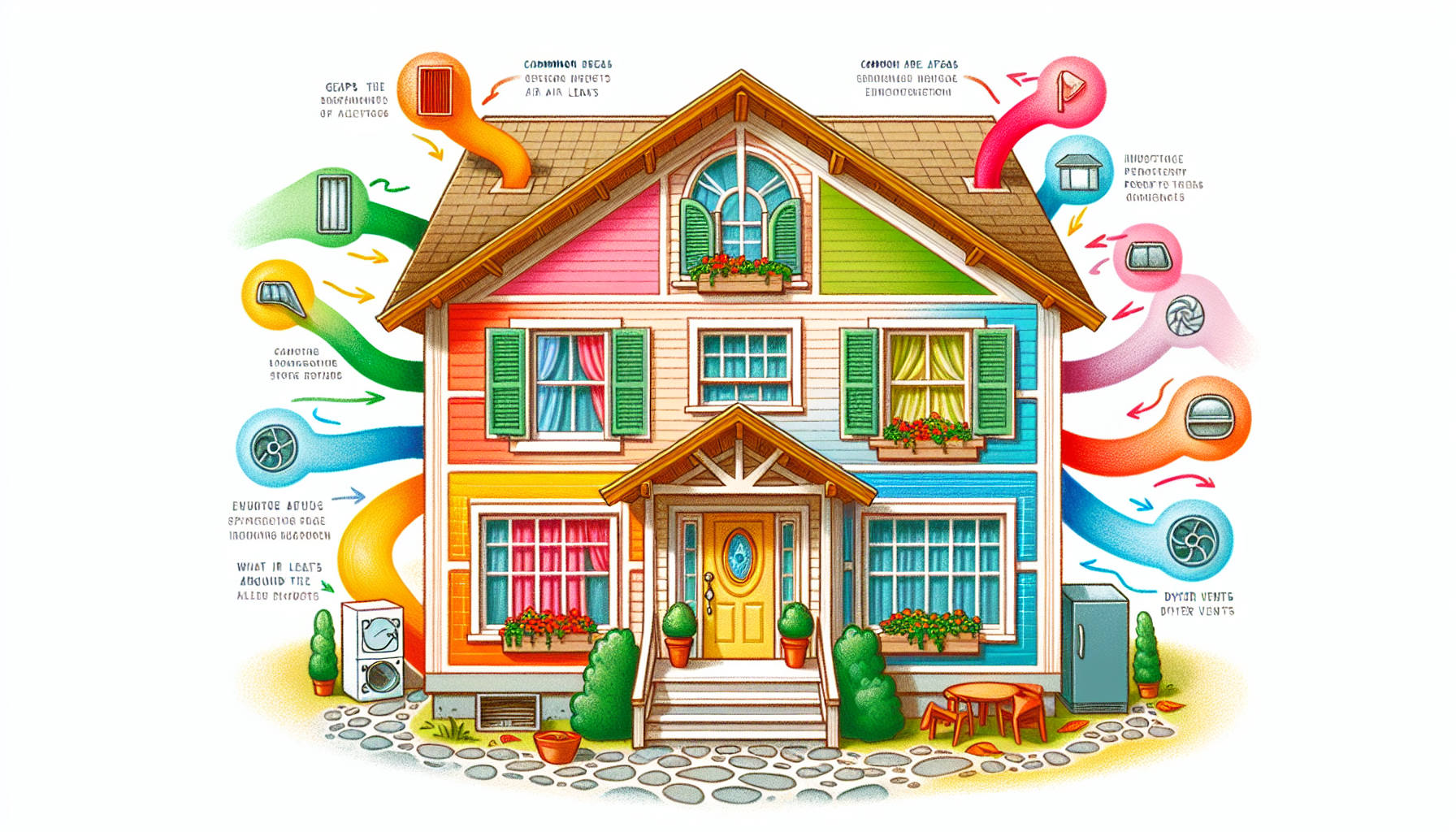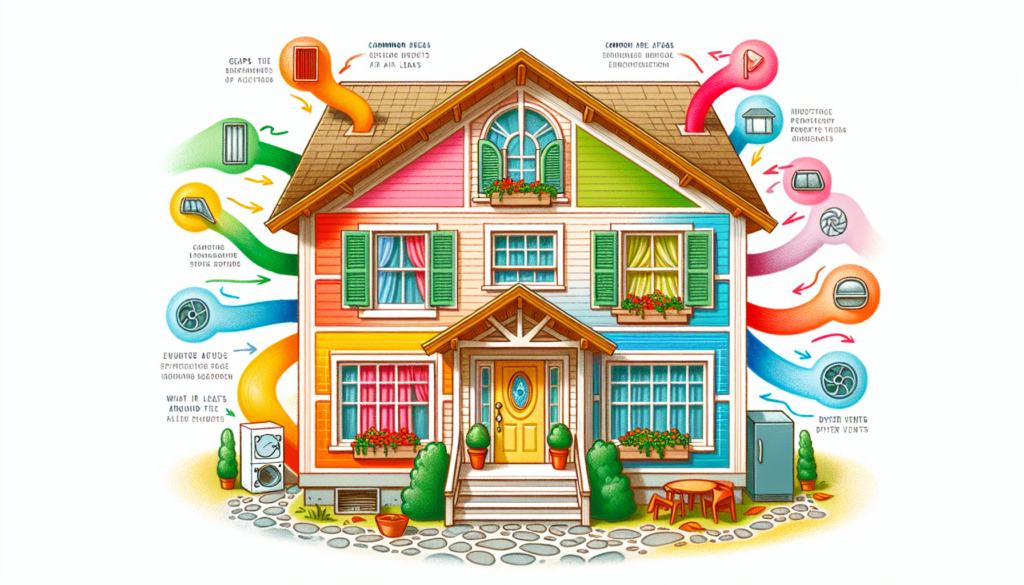Address
Energy Incentives, INC
3517 W. Canal Dr.
Kennewick, WA. 99336
Work Hours
Monday to Friday: 7AM - 7PM
Weekend: Day off
Address
Energy Incentives, INC
3517 W. Canal Dr.
Kennewick, WA. 99336
Work Hours
Monday to Friday: 7AM - 7PM
Weekend: Day off

Welcome to the ultimate guide on commercial air leakage testing! As the owner and lead consultant for Energy Incentives, INC., I, Lori Sanders, am excited to share everything you need to know about this crucial aspect of maintaining your commercial building’s integrity and energy efficiency. With years of practical experience and advanced certifications in energy auditing and inspections, I am passionate about helping building owners in Washington State achieve optimal performance and sustainability. Learn more about our air leakage testing services.
Air leakage, also known as infiltration, occurs when outside air enters and conditioned air escapes a building through cracks and openings. This seemingly minor issue can significantly impact a building’s energy consumption, indoor air quality, and structural durability. Common sources of air leakage in commercial buildings include gaps around windows and doors, improperly sealed ductwork, and penetrations in the building envelope for utilities.
Air leakage testing is essential for improving energy efficiency and reducing operational costs. By identifying and sealing leaks, you can prevent conditioned air from escaping and outside air from entering, thus reducing the load on your HVAC system. This results in lower energy bills and a more comfortable indoor environment.
In Washington State, building codes and standards require commercial buildings to meet specific air leakage performance criteria. Conducting air leakage tests ensures that your building complies with these regulations, avoiding potential fines and ensuring eligibility for various energy efficiency incentives and rebates.
Maintaining an airtight building envelope enhances overall building performance. It improves indoor air quality by preventing pollutants and allergens from entering and enhances occupant comfort by eliminating drafts and maintaining consistent indoor temperatures. Additionally, it contributes to the longevity of your building by reducing moisture intrusion, which can lead to mold growth and structural damage.

Blower door tests are a common and effective method for measuring air leakage. A powerful fan is mounted in a doorway to depressurize the building, and the resulting air pressure differences reveal the locations and severity of leaks. This method provides precise and quantifiable results, allowing for targeted remediation efforts.
Thermographic inspections use infrared technology to detect temperature differences on building surfaces, highlighting areas where air leakage occurs. This non-invasive method is particularly useful for identifying hidden leaks in walls, roofs, and other building components.
Smoke testing involves introducing smoke into the building and observing where it escapes. This visual method is effective for pinpointing specific leaks and is often used in conjunction with blower door tests for a comprehensive assessment.
Tracer gas testing is an advanced method that involves releasing a non-toxic gas into the building and measuring its concentration levels at various points. This technique is highly accurate and can detect even the smallest leaks, making it ideal for complex and large-scale commercial buildings.
Before conducting an air leakage test, it’s essential to prepare your building. Close all windows and doors, shut off HVAC systems, and seal any intentional openings. This ensures accurate test results by isolating unintentional leaks. For insights into the accuracy of these tests, refer to our article on How Accurate Are Commercial Air Leakage Tests?.
Each type of air leakage test has specific procedures. For blower door tests, the fan is installed in an exterior door, and the building is depressurized. Thermographic inspections require scanning the building envelope with an infrared camera. Smoke tests involve generating smoke and observing its movement, while tracer gas testing involves monitoring gas concentration levels.
Interpreting the results of air leakage tests involves analyzing data to identify the location and severity of leaks. Blower door tests provide numerical values for air leakage rates, while thermographic inspections and smoke tests offer visual evidence. Tracer gas testing results are typically presented as concentration maps.
Once leaks are identified, effective strategies for sealing them include applying weatherstripping, caulking gaps, sealing ductwork, and improving insulation. It’s crucial to address all identified leaks to maximize the benefits of air leakage testing.
When selecting an air leakage testing service, look for professionals with relevant certifications and experience. At Energy Incentives, INC., our team is led by certified Energy Star Rater and Level 1 and Level 2 thermographer Lori Sanders, who holds advanced certificates in energy auditing and inspections.
Energy Incentives, INC. has a proven track record of delivering exceptional service to commercial building owners throughout Washington State. Our team is dedicated to helping you achieve optimal energy efficiency and compliance with local regulations.
When evaluating proposals from air leakage testing professionals, consider the scope of services, qualifications, and cost estimates. Ensure you choose a provider who offers comprehensive testing and detailed reporting at a competitive price.
Energy Incentives, INC. has successfully conducted air leakage tests for numerous commercial buildings in Washington State. For instance, our testing and remediation efforts for a local office building resulted in a 20% reduction in energy consumption and significant cost savings.
Our case studies demonstrate quantifiable improvements in energy efficiency, indoor air quality, and occupant comfort. These success stories highlight the transformative impact of thorough air leakage testing and remediation.
Air leakage testing is a vital component of maintaining your commercial building’s energy efficiency and performance. By understanding the significance of air leakage, utilizing effective testing methods, and choosing the right professionals, you can achieve substantial cost savings, regulatory compliance, and enhanced building integrity. Contact Energy Incentives, INC. today to schedule an air leakage test and take the first step toward a more efficient and sustainable building.
For more information, visit the following resources:
A: It’s recommended to conduct air leakage tests annually or whenever significant building modifications are made.
A: Costs vary depending on the size and complexity of the building. Contact Energy Incentives, INC. for a customized quote.
A: Yes, by sealing leaks, you can prevent outdoor pollutants and allergens from entering your building, enhancing indoor air quality.